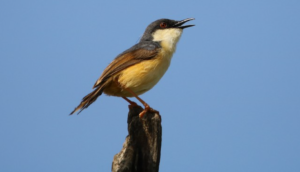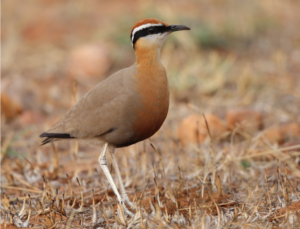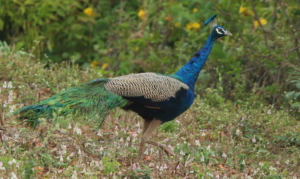State of India’s Bird Report 2023.
The State of India’s Birds 2023, report was released, which is based on 30 million observations contributed by 30,000 birdwatchers across the country to assess the survival of the birds in India.
The first State of India’s Birds report in 2020 also showed similar trends of decline in bird populations in India. The 2020 report relied on more than 10 million observation records, contributed by over 15,500 birdwatchers in India.
Key Findings of the report
- It lists 178 bird species in the country as being of “High Priority” for immediate conservation action including migratory wetland birds like the Ruddy shelduck.
- Of the 338 species that had enough data to assess for long-term trends, 60% of the species showed long-term declines.
- The trends showed that 204 species have declined in the long term, 98 species declined rapidly, 98 species are more or less stable, and 36 species showed increases.
- Of the 359 species analyzed for current annual trends, 40% are declining. The current trends showed that 142 species are declining (of which 64 are in a “rapid decline”), 189 are stable and 28 are increasing.
- Generalists like the Indian peafowl and Asian koel are thriving in India, while habitat specialists such as birds found in grasslands and wetlands, are in rapid decline.
- Birds that feed on vertebrates and carrion – including raptors (specifically habitat-specialist raptors such as some harriers and the Short-toed snake eagle), and vultures – have declined greatly.
- Insectivorous birds are also in peril.
- Bird endemic to the Western Ghats and Sri Lanka biodiversity hotspots have rapidly declined in India.
- Grassland birds such as the Great grey shrike (which has faced a decline of more than 80%) and Great Indian bustards are on the decline.
- Wetland species and shorebirds such as the dainty curlew sandpiper have also witnessed declines.
- Considered globally Near Threatened, this species (curlew sandpiper) used to be observed in large numbers in key Indian wintering sites like Point Calimere and Pulica.
- A few generalist bird species are doing extremely well in the country, per the report. This includes the national bird, the Indian peafowl- The national bird of India.
Species of high conservation priority
The SoIB 2023 report classified all 942 species into three categories for priority action. It has classified 178 species as High Priority, 323 as Moderate Priority, and 441 as Low Priority.
High Priority Species
- It includes migratory wetland birds like the Ruddy shelduck and resident species such as the Indian courser.
- Endemics such as the Narcondam hornbill which is found only on the small, roughly 7 sq km Narcondam island in the Andaman and Nicobar Islands and the Nicobar megapode on Nicobar Island.
- 90 are classified as globally of Least Concern by the IUCN Red List 2022.
Reasons For Decline
- The report also highlighted several major threats– including forest degradation, urbanization, and energy infrastructure – that bird species face across the country.
- Environmental pollutants including veterinary drugs such as nimesulide and diclofinac still threaten vulture populations in India.
- The impacts of climate change (such as on migratory species), avian disease and illegal hunting and trade are also major causes of concern.
Plan of Action
- The need to conserve specific groups of birds. For instance, the report found that grassland specialists have declined by more than 50% – indicating the importance of protecting and maintaining grassland ecosystems.
- systematic monitoring of bird populations over long periods of time is critical to understanding small-scale changes in bird populations.
- It is becoming clearer that we also need more research to understand the reasons behind the declines or increases.
- “Our laws and policies are largely framed around what we need to do to save threatened species but equally we need to keep common species common”.
- Policies – such as river, water, or wasteland development policies – must also converge together for better implementation.
Points To Remember
- Ground-dwellers- They are restricted to open habitats such as grasslands that are broadly known as open natural ecosystems- Such as Great Indian Bustard.
- Generalists- They are species that can thrive and adapt to more habitat types and food resources.
- Endemic- They’re restricted to specific areas such as biodiversity hotspots, and are found nowhere else in the world.
- Habitat specialists- They are found only in some habitats in the country like grasslands and wetlands.






